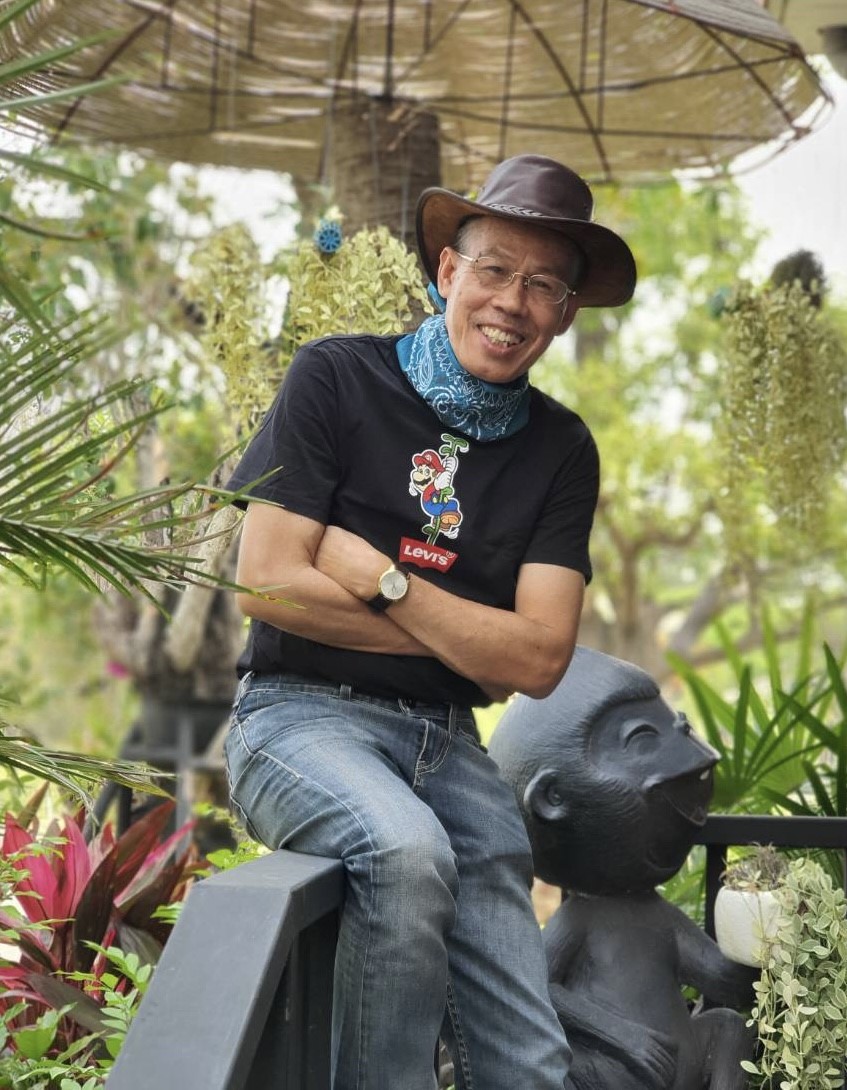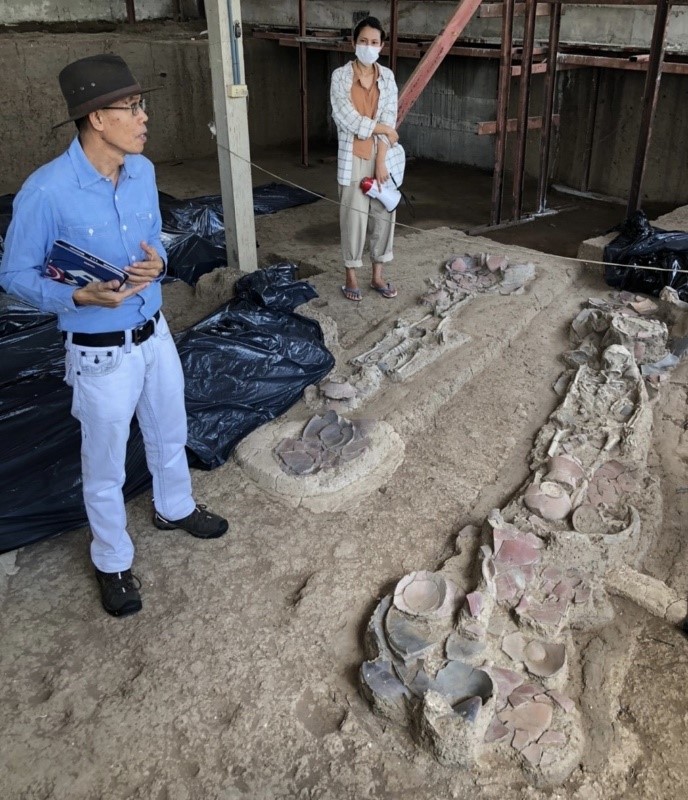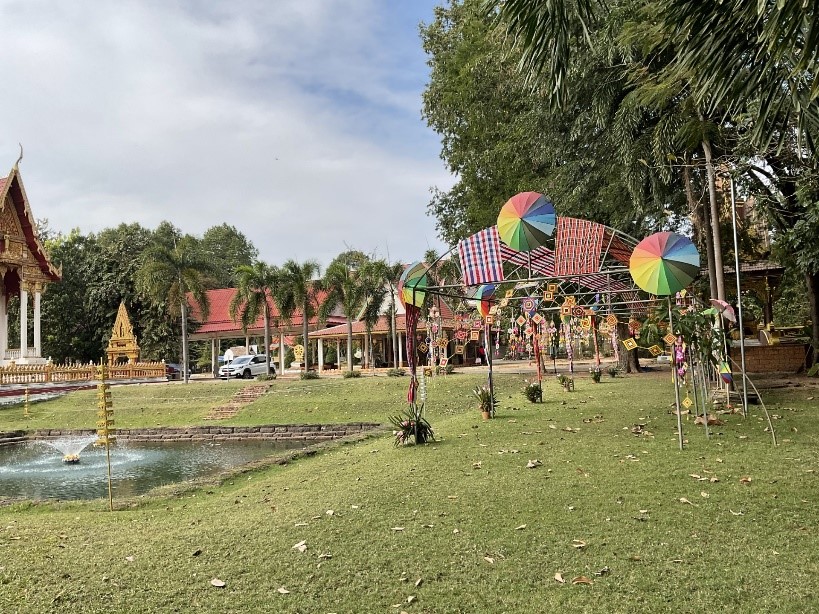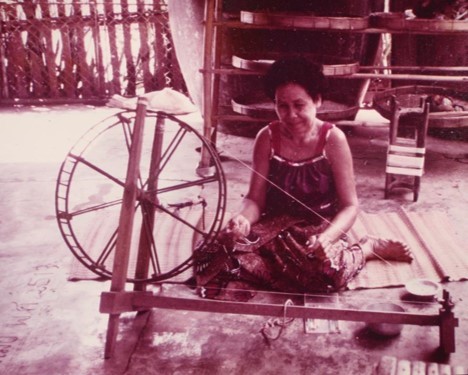Lertcharnrit, Thanik
VISITOR’S VOICE
Interview with Thanik Lertcharnrit »
Faculty of Archaeology, Silpakorn University

What are your favorite things?
I am naturally obsessed with food, especially indigenous food. Food is the most important thing that humans have spent time and energy to find and produce since we first roamed earth over three millions years ago. Food and foodways can tell us things and stories beyond taste. I love trying new food. Here in Kyoto in particular, and in Japan in general, I am enjoying a wide variety of Japanese food.
Watching movies is also a favorite hobby of mine. I like watching almost every kind of movie, from action and period films to comedies and dramas.
Music is always in my heart. Although I have liked to sing since my childhood in Northeast Thailand, I am not very good at it. I therefore prefer listening to music and songs, particularly country and traditional music such as “Moh Lam,” a traditional music and performing art and important intangible cultural heritage from my home region of Thailand.
Interview
Why does Heritage Need Proper Interpretation and Presentation?
01
Please tell us about your research.

Heritage, both cultural and natural, has been with us humans since prehistory and is highly valued for various reasons (e.g., spiritual, economic, aesthetic, historical, and social significance) (Lipe 1983). It thus deserves protection, respect, and continuation. Thailand is rich in cultural heritage, both tangible (historic places, archaeological sites and landscapes, ancient monuments and objects) (Figure 1) and intangible (such as performing arts, indigenous knowledge about nature and society, social practices, traditional crafts, and language) (Figure 2). I am therefore interested in how heritage can be meaningfully sustained and equally beneficial to the people of Thailand. Although heritage is valuable to all kinds of people in societies, the management of heritage is often limited to those who are considered “specialists” or “experts” in specific fields (such as archaeology, art history, architecture, history). These people tend to interpret what they think they know about heritage in their own ways and languages to the public. Here I define “interpretation” as communicating with various audiences using different methods, strategies, actions, and concepts to convey particular messages. Successful interpretation involves various techniques, tools, ideas, and so on and enhances understanding of heritage (see for example Staiff 2016; Swain 2007; Tilden 1977). Although Thailand’s rich cultural resources are critical for the country’s development, public interpretation of cultural heritage at heritage sites (such as museums, historical parks, national parks, ancient monument complexes, and historic towns) in Thailand receives relatively little academic or research attention. Increased public interpretation of cultural heritage promotes better understanding, appreciation, and protection of heritage.

02
Can you share with us an episode about any influential people, things, and places you have encountered whilst doing your research?
I have been interested in cultural heritage since my childhood. I was born in a rural rice farming village of the province of Khon Kaen in Northeast Thailand. My father was a talented hunter; he was skilled at making old-fashioned or primitive hunting-fishing tools such as sling sticks, bamboo blow guns, and fish hooks, while my mother was keen in cotton and silk weaving (Figure 3). This family background significantly inspired and paved a firm foundation for my education and research; I graduated and obtained degrees (BA, MA, and PhD) in archaeology. Khon Kaen is richly blessed with archaeological sites (both prehistoric and historic). I have made numerous visits to heritage sites and museums in the province, and I have chosen the ancient town of Non Muang as a case study. The site is interesting for its unique heritage content, which includes archaeological remains of human burials, grave provisions, animal fossils, artificial moats, earthen walls, and habitation debris unearthed from excavations. At the same time, provincial government agencies want to promote it as tourism site. However, there is still relatively little public interpretation of the site. One of the most influential persons to my research is Professor William D. Lipe (Washington State University, USA), who is an expert in cultural heritage management and has served as advisor, mentor, and endless supporter of my cultural heritage research.
03
How do you overcome the difficulties in putting together the results of your research into a research paper or book?
I am quite flexible in dealing with difficulties and strive for the best of results. I follow instructions, comments, and suggestions by journal or book editors while retaining my academic stand points.
04
Do you have any essential reads (books) that you can recommend to younger people?
For those younger people who might be interested in heritage and in the past in general, I recommend The Past is a Foreign Country by David Lowenthal. This book expands the reader’s critical thinking about the past and the heritage that is abundantly around us. Another book that is an essential food for thought is Uses of Heritage by Laurajane Smith. I would also recommend The Creative Spark: How Imagination Made Humans Exceptional by Agustin Fuentes as this book is readable and thought-provoking, and based on scientific research.
05
Why do you choose CSEAS, or what is your expectation here?
There is no doubt that CSEAS is home to excellent resources for my research and life as a scholar. Here there is a cohort of prominent scholars in various fields of study. The center and the university are well equipped with libraries, museums, research collections, and a learning atmosphere. In addition, Kyoto is a paradise for my research on heritage management, given that there are countless heritage sites in and around the city. These things are all positive and fruitful for my research and stay here at CSEAS.
(July 2023)
References
Swain, Hedley. 2007. An Introduction to Museum Archaeology. Cambridge: Cambridge University Press.
Lowenthal, David. 2015. The Past is a Foreign Country — Revisited. Cambridge University Press.
Smith, Laurajane. 2006. Uses of Heritage. Routledge.
Fuentes, Agustín. 2017. The Creative Spark: How Imagination Made Humans Exceptional. Penguin.
Thanik Lertcharnrit is a Visiting Research Scholar of CSEAS
from July – September 2023
Visitor’s Voiceのインタビューをお読みくださり、ありがとうございました。
ぜひ感想をお聞かせください。
